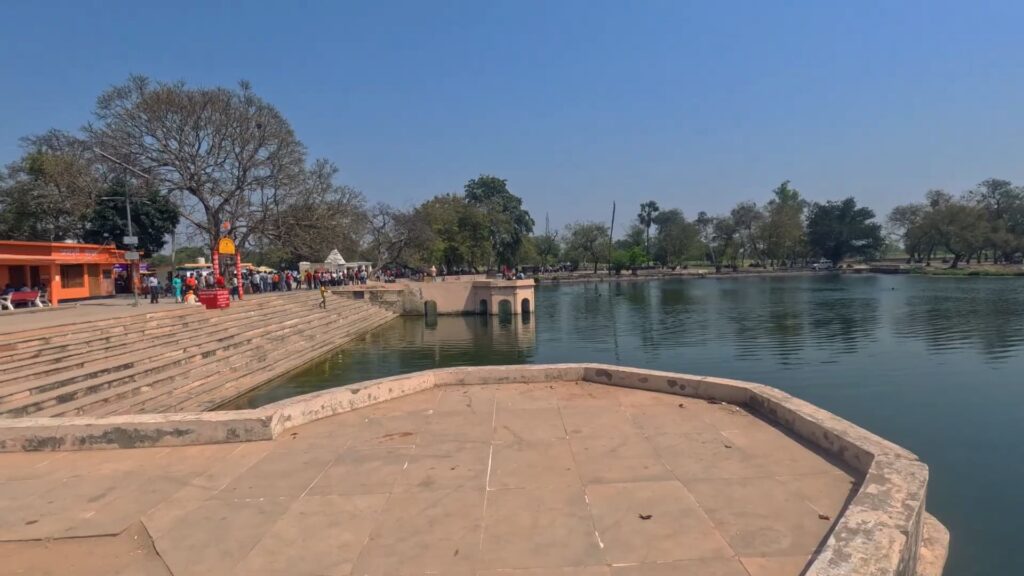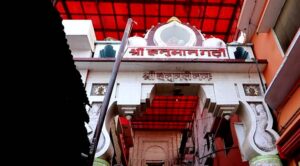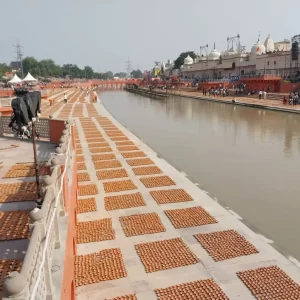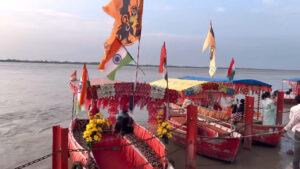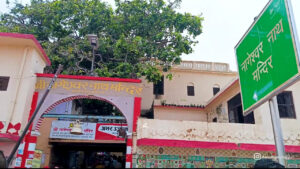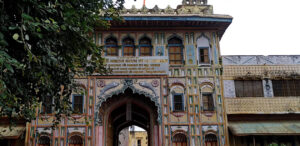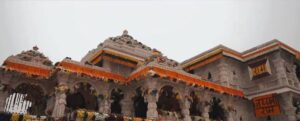Following the Footsteps of Lord Rama and Bharat
Jai Shri Ram! Welcome to a spiritual journey beyond Ayodhya city — into the heart of Ramayana’s legacy. After visiting the temples and ghats of Ayodhya Dham, your pilgrimage continues toward two sacred sites linked to Lord Rama’s vanvaas and his brother Bharat’s devotion
These places, located around 15–20 km from Ayodhya, carry the soul of Ramayana’s emotional depth. Let’s explore how to reach them, what you’ll experience, and why every devotee should walk this path once in their life.
How to Reach Nandigram from Ayodhya
From Ayodhya Junction railway station or Shri Ram Janmabhoomi Mandir, your first step is to reach the Naka Bypass, which lies close to the Valmiki Airport. From anywhere in Ayodhya city, take a shared auto (₹20–₹50) to Naka Bypass. At the Naka Bypass auto stand, you will find autos and buses heading toward Nandigram and Bharatkund. A shared auto to Nandigram typically costs around ₹20–₹30. Total travel time is about 30–45 minutes.
Sacred Sites in Nandigram (Bharatkund)
1. Bharat Hanuman Milap Temple
This is the sacred site where Bharat and Hanuman first met after the Lanka war. It’s said Bharat mistook Hanuman as a threat and shot an arrow at him. When Hanuman fell, he narrated the story of Lord Rama’s return. This place marks the emotional reunion of devotion and loyalty.
- Inside the temple is a beautiful sculpture of Bharat and Hanuman embracing.
- There’s an underground cave (gufa) where Bharat is believed to have meditated for 14 years, worshipping Lord Rama’s Padukas (footwear).
- The temple is peaceful, with regular bhandaras (community meals) held every afternoon.
2. Bharat Ji’s Temple
Just a few steps from the Bharat–Hanuman temple, you’ll enter a larger temple complex dedicated to Bharat Maharaj.
A sacred banyan tree stands at the entrance, believed to be centuries old.According to legend, this temple was built by Emperor Vikramaditya. You will find other temples inside, including Yagyashala, Nandeshwar Mahadev, and a shrine where Hanuman fell after being hit by Bharat’s arrow.
Here, Bharat worshipped Lord Rama’s Padukas on a golden throne, ruling Ayodhya as a caretaker monarch, dressed as a hermit and living in a self-dug cave 6 feet below ground.
3. Shri Ram-Janaki Temple (Pan-Kutir Temple)
This temple is significant for two reasons:
It houses the sacred well where Bharat poured water from 27 holy rivers, which he had collected for Lord Rama’s coronation. When Lord Rama returned from exile, he and Sita spent one night in this very spot — in a humble hut built by Bharat, known as Pan-Kutir. An eternal Ram Dhun (chant) echoes through this temple, adding a serene spiritual vibration to the entire area.
Bharatkund (The Sacred Lake)
A short walk from the temples takes you to Bharatkund, a peaceful and scenic sacred pond (saroovar).
Here, daily evening aartis take place at the ghat. The kund is now split by a modern road into two parts , Bharatkund, where rituals and aartis happen and Gaya Kund, a cremation and pind daan site, where Bharat performed shraddh rituals for King Dasharatha for 14 years. The surroundings are well-developed with ghats, temples, and even a park nearby.
Nandigram is not just a historical or mythological site — it’s a place of unparalleled devotion. Here, Bharat’s loyalty, sacrifice, and sense of duty come alive. The Padukas he worshipped still inspire countless pilgrims. A visit here is a deep spiritual experience — serene, humbling, and powerful.
Whether you’re a devotee, a traveler, or a seeker — this journey from Ayodhya to Nandigram will stay with you long after you return home.

